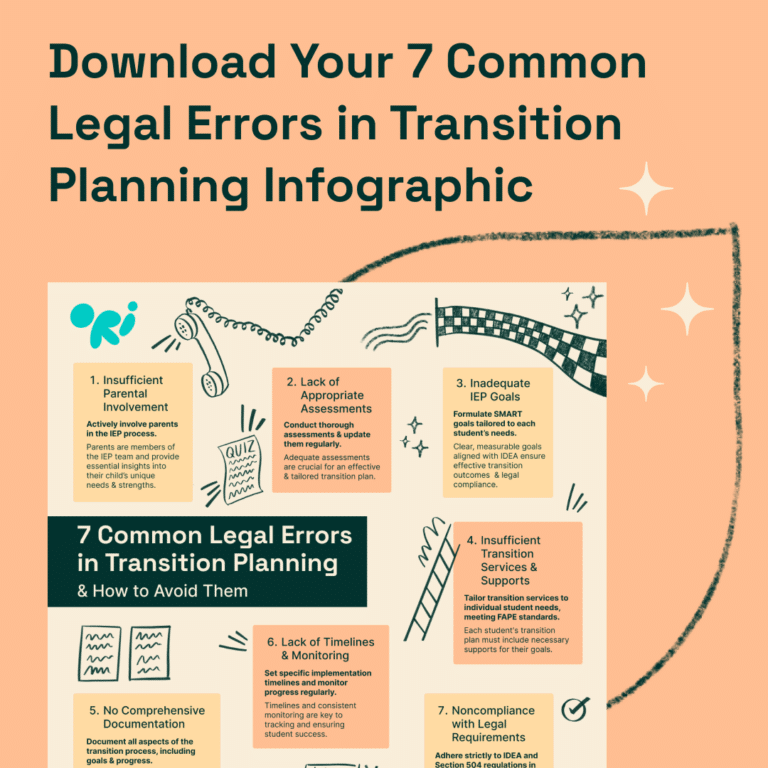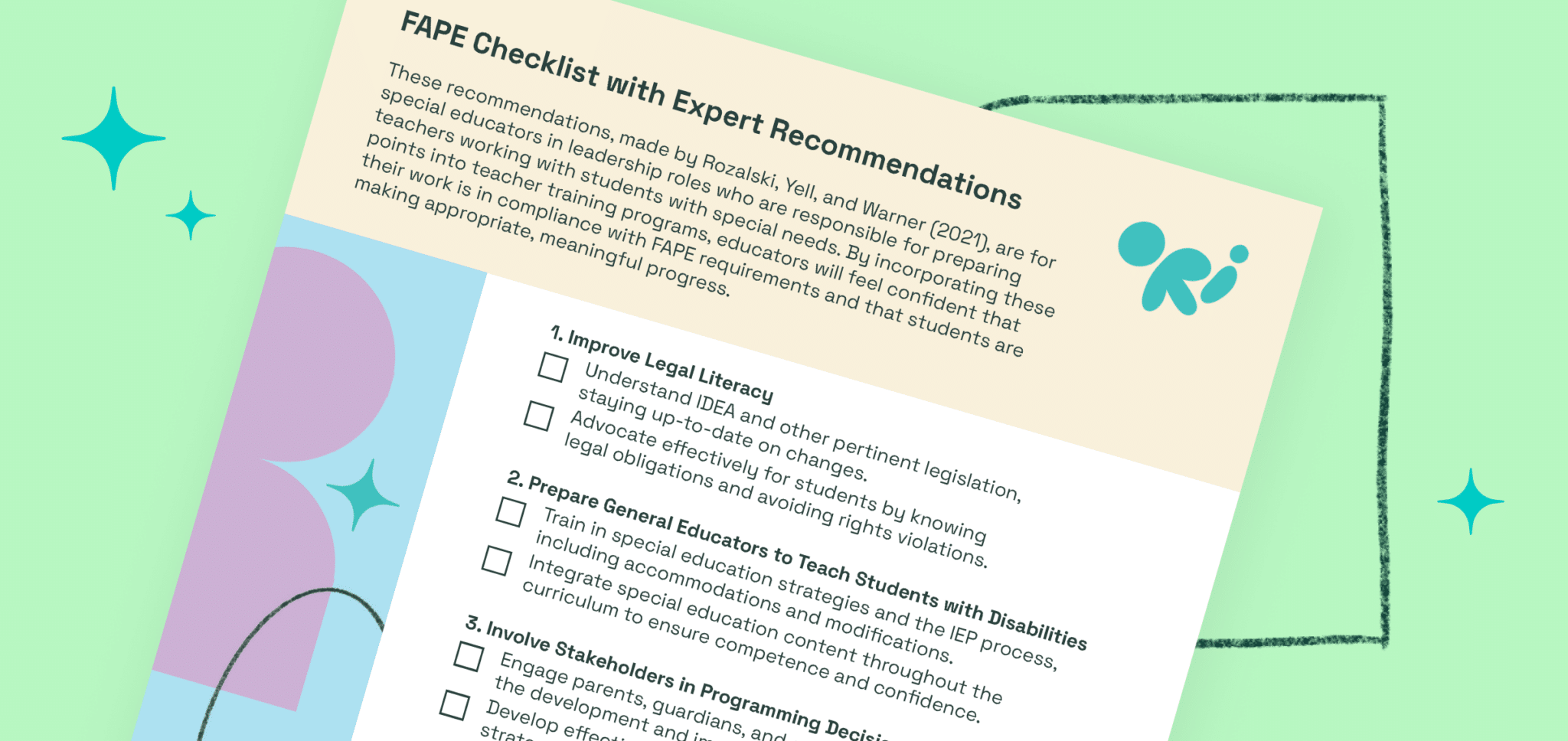
7 Most Common Legal Errors for Special Educators to Avoid in the Transition Planning Process


One of the age-old fears of being a special educator is the reality that you may make a legal error in your service and engagement in the transition planning process. Whether you are in your first or thirtieth year, the anxiety associated with the copious amount of legal requirements stipulated by the IDEA never goes away.
When even a minor oversight can lead to progressively tougher penalties, it’s important to stay up to date with changes in legislation and to be aware of the most common legal pitfalls of the IEP process. To best prepare you to anticipate these hurdles, we’ve consulted with Dr. Kurt Hulett, P.h.D – a leading expert in special education who advises teachers and districts across the country on how to navigate the labyrinth of legal intricacies in the IEP process.
According to Dr. Hulett, legal action is becoming more widespread and penalties more severe when it comes to the transition planning process. “With recent U.S. Supreme Court and U.S. Circuit of Appeals cases, the frequency of cases – along with the degree of consequences (Perez v. Sturgis, 2023) – are only increasing.”
In the case noted by Dr. Hulett above, the Supreme Court ruled that students with disabilities and their families do not have to exhaust the administrative adjudication procedures under the Individuals with Disabilities Education Act (IDEA) in all circumstances before filing a lawsuit seeking compensatory damages under the Americans with Disabilities Act (ADA) or other federal anti-discrimination laws.
In other words students and parents can now file cases without going through all the usual administrative processes, meaning a further increase in legal actions may be coming in the future.
In addition to a general rise in litigation in special education, Dr. Hulett also notes “a spike in transition planning-related state complaints, IEP due process filings, and litigation.” This surge in legal challenges raises significant red flags and underscores the critical importance of understanding and adhering to the legal requirements surrounding this crucial phase of a student’s educational journey.
Drawing on his extensive experience working with teachers and districts across the country, Dr. Hulett has prepared a list of the seven most common errors made by educators that lead to FAPE violations specific to transition planning.
Failing to include parents or guardians in the transition planning process or not considering their input and preferences can be a legal error. Parents are key members of the IEP team and should be actively involved in decision-making.
Moreover, their insights into their child’s strengths and challenges are invaluable for ensuring the successful transition of students into adult life.

Post-secondary goals in the transition plan should be specific, measurable, achievable, relevant, and time-bound (SMART). Failing to develop meaningful and measurable goals can undermine the effectiveness of the plan and expose institutions to legal action.
As per IDEA legislation, schools must demonstrate how they plan to achieve the goals they lay out in the transition plan and include details on timelines and performance measures they will use in the process.
The transition plan should include a range of appropriate and individualized transition services and supports necessary to help the student achieve their post-secondary goals. Failure to provide adequate services or address specific needs can be a legal error.
To meet FAPE requirements, schools must provide students with education that is tailored to their individual needs and benefits them in a meaningful way.
It is essential to document all aspects of the transition planning process, including assessments, goals, services, accommodations, and progress monitoring. Incomplete or insufficient documentation can create compliance issues.
This is not only crucial for ensuring clear and transparent communication within the IEP team but also creates a trail of records that demonstrate the school’s adherence to federal law.
Prepare your students for lifelong success with Ori’s Transition Curriculum.
Transition planning should include specific timelines for implementing the plan and monitoring the student’s progress. Failing to establish timelines or regularly monitor progress can impede the student’s successful transition.
This is why it’s important to choose a transition curriculum that allows you to accurately measure the success of each individual student.
The special education transition planning process must comply with applicable laws and regulations, such as the Individuals with Disabilities Education Act (IDEA) and Section 504 of the Rehabilitation Act.
Failing to adhere to the mandates outlined in laws like IDEA and Section 504 can not only jeopardize the student’s access to appropriate education and support but also expose educational institutions and professionals to potential legal liabilities, including costly litigation and reputational damage.
By placing a priority and focus on these seven areas, you can markedly decrease your chances of landing in hot water and meaningfully increase the quality of each child’s transition plan. As Dr. Hullet remarks: “Remember to place the individual needs of each child at the center of the transition planning process and legal compliance will likely follow.”
When we begin each element of the IEP process with a genuine focus on the individual child, a focus on his or her specific data, measure priority areas regularly and reliably, and utilize evidence practices and approaches to serve the child, legal compliance tends to follow in short order. In the words of Dr. Hulett: “When the spirit of IDEA is adhered to in the IEP transition planning process, the letter of the law is often met.”
With Ori’s transition curriculum your school or district can enjoy the peace of mind of having access to an easy-to-implement, comprehensive program that allows you to report on progress and demonstrate compliance. Find out how our curriculum can help you meet IEP goals safely and consistently.
Three key legal concepts related to an Individualized Education Program (IEP) are:
Federal IEP regulations stipulate, among other things, that parents must be involved in the transition planning process along with educators, and that a clear roadmap must be created including SMART goals for each child and IEP.
A substantive violation of IEP occurs if services are inadequate for Free Appropriate Public Education (FAPE) requirements. Examples include insufficient assessments, unclear annual goals, and not ensuring a Least Restrictive Environment (LRE).


